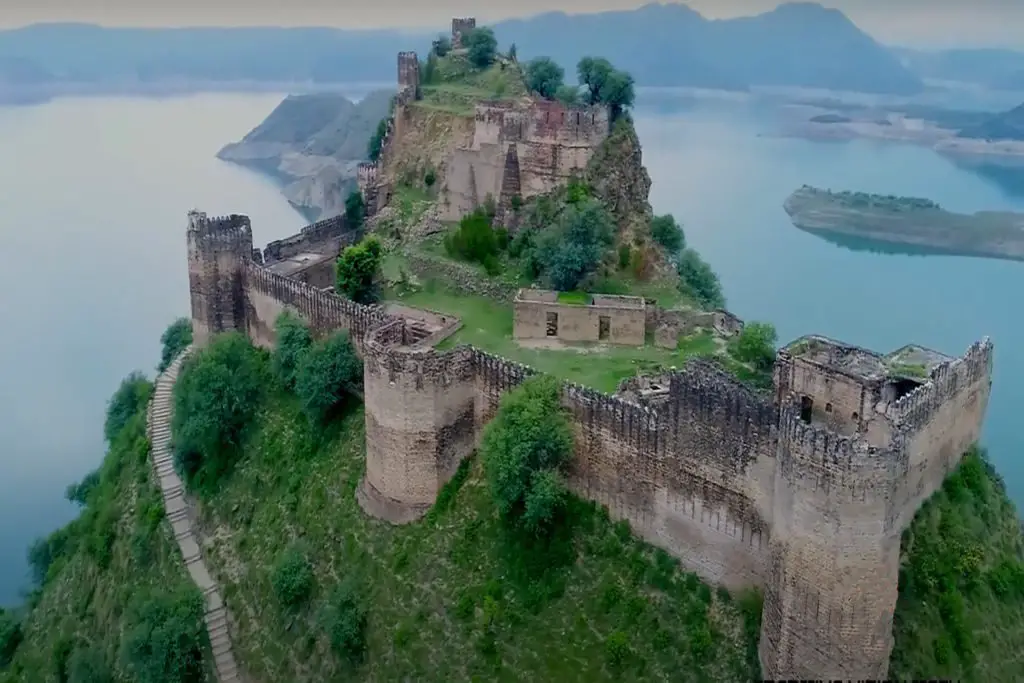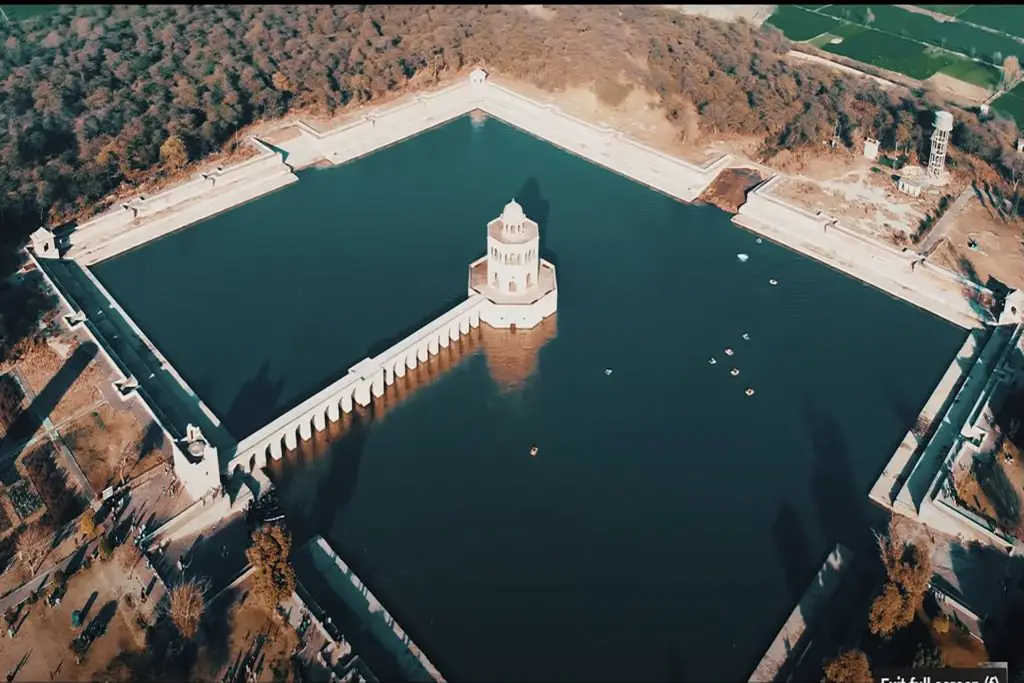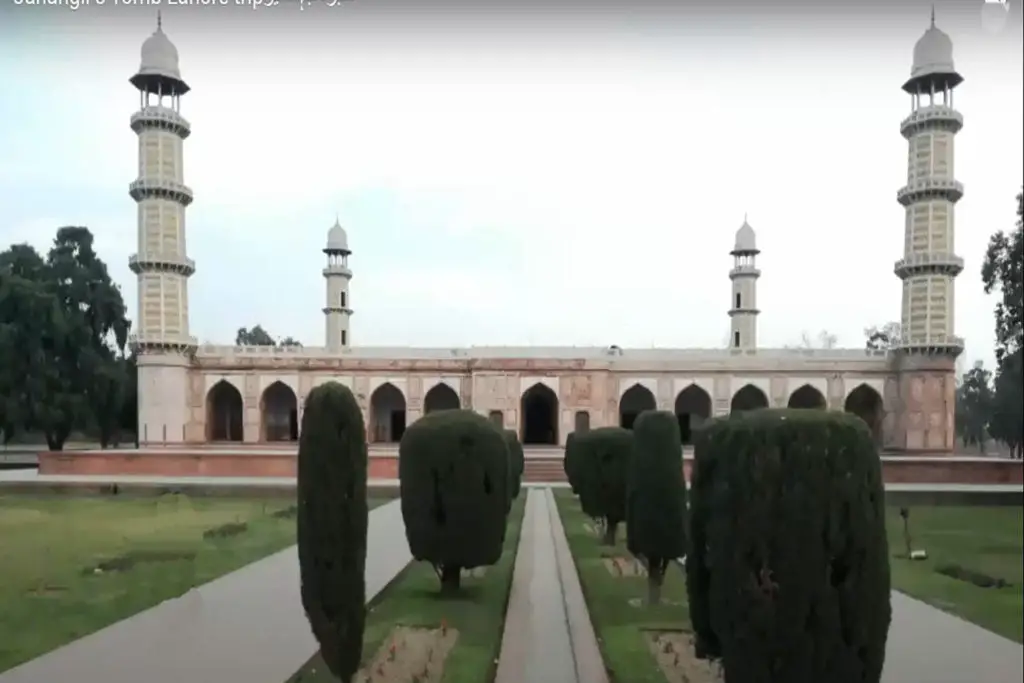Qila Ramkot Fort Built
Qila Ramkot Fort Azad Kashmir Pakistan was built in the 12th Century as by British geographer Fredrick Drew. Fort was built by a Gakhar chieftain named Toglu. It is located on the edge of the Mangla dam.
Ramkot Fort also known as Qila Ram Kot is an ancient fortress in Mirpur, Azad Kashmir, Pakistan.
Qila Ramkot Fort Azad Kashmir Pakistan Architecture
Due to its unusual architecture, the Qila Ramkot Fort Azad Kashmir Pakistan differs from the forts built in the Kashmir region. At the confluence of the Jhelum and Poonch rivers, the Ramkot Fort stands on a steep cliff overlooking the Mangla Lake.
In the 16th and 17th centuries, the Muslim rulers of Kashmir built several fortifications, one of which was Ramkot Fort, now surrounded by the waters of Lake Mangla.
Ramkot Fort Location
Qila Ramkot Fort Azad Kashmir Pakistan is located at the junction of Rivers Jhelum and Poonch, on a straight slope overlooking the glistening blue waters. Due to its unusual architecture, the Ramkot Fort is unique among the castles built in the Kashmir region.
Similar to the architectural features of Mangla and Muzaffarabad Forts, Ramkot was probably built at the same time.
Ramkot Fort Directions
To get close to this castle, you have to take a boat from the waterfront in Mangla Dam, which, after about a 10-minute trek, reaches the northern end of the lake. Here you will find a large castle on top of a hill.
A short but steep climb to the castle. This cunning place must have been a strategic connection to the fort in the past, but nowadays, it has become the cause of its separation and desertification; unlike other places in Mangla Lake, few tourists choose to travel this way, perhaps because of the distance and difficult terrain.
Even the government, the Azad Jammu Kashmir government or the coalition government (using Mangla Dam) seems to be interested in the restoration and development of this heritage.
Although most of the castle is in ruins, the symbols of its past life and beauty are still alive.
For example, a gate, carefully designed for shooting, rests at all angles. It is the only entry/exit area with strong defenses. Ramps ran from the ground floor to the fence, which was apparently used to bring weapons into the area.
As for water tanks, historians are not sure why such a small fort used such huge tanks.
Although the castle is damaged, there are signs of its magnitude in the past, for example, a cleverly designed gate that sits at all angles.
Roads and cannon fodder are just a few of the times when Kashmir’s Dogra captured the fort in the 19th century.
Ramps from the ground floor to the roof are used to bring weapons into the area. Arrow Smith’s 1841 map of Kashmir says nothing about Ramkot Fort.
Ramkot Fort History
The fort was neglected until the late 1990s, when Dr Anis ur Rehman, head of the Islamabad-based NGO Himalayan Wildlife Foundation, first met Ramkot on a fishing trip to Mangla. Dr. Anis ur Rehman told me that by the time he first entered the castle, it had collapsed and was inaccessible, and piles of mud and thick vegetation had taken up every inch of the castle.
Similar to the architectural features of Mangla and Muzaffarabad Forts, Ramkot may have been built in the second half of the 16th century. The narrow channels of musketry changed the times when Dogra Maharaja of Kashmir captured this castle in the 19th century.
Historians are not sure what they did with such large water tanks in a small fortress. The castle remained unknown until the late 90s, due to its inaccessibility.
Roofs and doors were installed at the main entrance, water tanks were removed, wild plants that had bred snakes were removed, and old locks were placed on the base of the arms.
Pakistani soldiers have given older models a refusal, but due to lack of care, they are now broken.
Like many other heritage sites, Ramkot has its share of legends surrounding its founding. It is said that the fort was built on the site of an ancient Hindu Shiva temple, but if you look at the modern structure of the castle, no one can doubt that it was a 16th-century construction.
According to archaeologist Dr. Saif ur Rehman Dar, this fortress, similar to the Muzaffarabad Fortress, was probably built in the second half of the 16th century, and crosswalks, cannons, and narrow openings for the construction of weapons are the changing times. Dogra Maharaja of Kashmir captured the fort in the 19th century.
Like other castles in Azad Kashmir (such as Mangla, Muzaffarabad, Barjhan, and Throtchi), Ramkot Fort could not make much of a historical record. The 1841 Arrow Smith map of Kashmir says nothing about it. But according to prominent travel writer Salman Rashid, Frederic Drew, a geologist appointed in the Maharaja of Kashmir, sheds light on Ramkot in his book The Jummoo and Kashmir Territories: A Geographical Account, published in 1875. It was built, he writes. , Gakkhar whose name is Toglu. After the Gakkars, the fort was given to Dogras.
Over the past decade, Qila Ramkot Fort Azad Kashmir Pakistan has been quickly deployed on the path to its destruction. The rehabilitation work done by Dr. Anis Ur Rehman has lost much of its impact due to a lack of daily guidance and care. The October 2005 earthquake also severely damaged the fortress, and the deep neglect of AJK authorities did not help.
Dr. Rehman told me that a few years ago, a person from the UK from Kashmiri showed interest in developing the castle as a tourist attraction, but was unable to do this work all the time.
Once fully restored and provided with the necessary resources, Ramkot Fort will attract more tourists and make a good investment in the AJK government. It can also add to the history, heritage, and culture of the country and the people of Kashmir.
The fort is said to have been built on the site of an ancient Hindu Shiva temple, but the present building was erected before the 16th century.
If you look over Lake Mangla, Ramkot Fort has the potential to be a tourist attraction once fully restored.
Once completely restored, the Qila Ramkot Fort Azad Kashmir Pakistan can make a good investment in the AJK government through tourism, without adding to the beauty and culture of the area.
Ramkot Fort Distance from Islamabad
Ramkot Fort Azad Kashmir Pakistan is located at a distance of around 115 km from Islamabad.
It will take around 3 hours to reach Ramkot Fort from Islamabad
Ramkot Fort Distance from Lahore
The distance of Qila Ramkot Fort Azad Kashmir Pakistan from Lahore is around 325 km.








